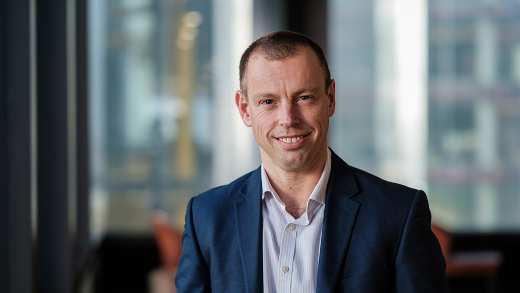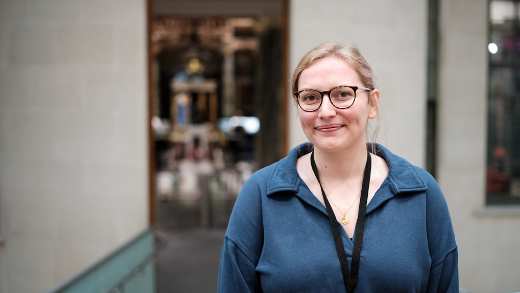Sam Woods
Digital Communications
High quality office space means more than just a place for desks. How our investments are helping the City get ready for whatever the future brings.
As a photographer who works on Fenchurch Street, I'd bet that I've spent more time than most looking up in the City of London.
The usual Londoner rarely looks up. It's more head down, pace up. If you're blocked on the pavement by someone gawking up at a skyscraper in the Square Mile, chances are it's a photographer or a tourist – or both.
Personally, I'm quite fond of the Walkie-Talkie. There's a shot of it that I've taken more than once. Walk from the Tower of London, down Great Tower Street, and you'll see it pushing up and over the buildings below, seeming to lean across the street towards the river.
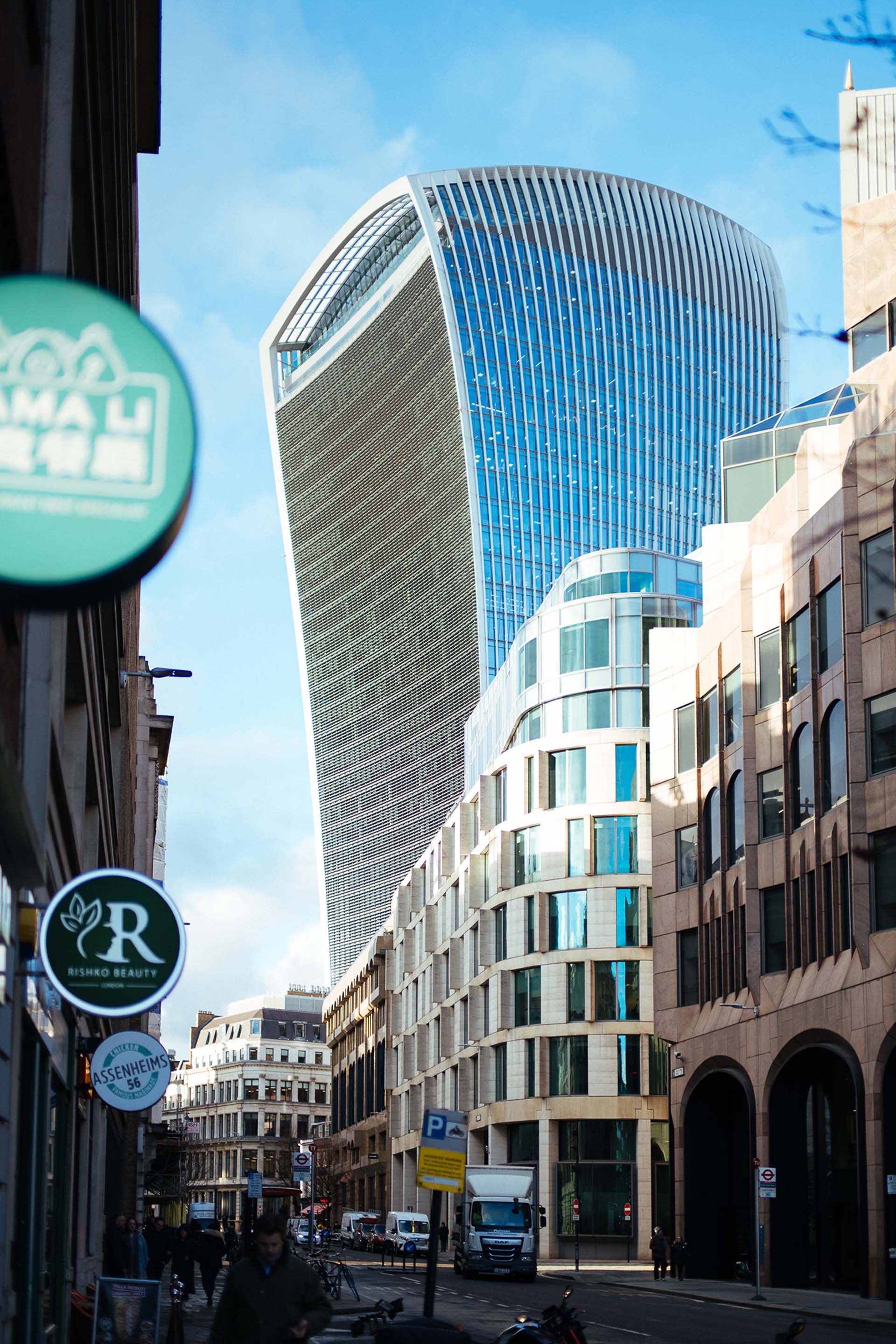
The Lloyds Building is fascinating and inside-out (and those lifts are not for people with a fear of heights). The Cheesegrater, almost the opposite of the Walkie-Talkie, narrows as it goes upward, angling away from Leadenhall Market. It's all flat planes and sharp edges, nothing like the Gherkin, just a few seconds around the corner.
They're all interesting shapes to photograph. Strange geometries against the sky. There's a lot of them too.
But, actually, there might not be enough. Not just the offices with fancy nicknames either, but high-quality offices in general. In fact, earlier in the year I saw a headline that said that, in Q1, demand for London offices hit its highest point since the financial crisis.
But, hold on a moment... wasn’t everyone just predicting the death of the office?
I couldn’t make those two ideas match up in my mind. So I arranged to meet two people at Aviva Investors whose work helps shape that skyline I photograph so often. Ed Atterwill, Head of Central London Investment Management and Ben Littman, Head of Development, Aviva Investors.
The foundations
Before we can get to the reasons for the shortage of office space, we need to talk about that elephant in the room. The office was supposed to be a bit out of fashion after the pandemic.
I ask Ed Atterwill, the man who decides where and why Aviva Investors invests billions in central London: why do we still invest in offices?
"It comes down to returns," Ed explains, simply. "Offices still offer strong returns."
"The vacancy rate of new build offices in the City is about half a percent."
If your mind works like mine, it’s a bit more impactful when you phrase it like this: 99.5% of new build offices are full. Only half of a single percent are vacant.
"That is at an all-time low," Ed says.
The City?
When we’re talking about 'the City', we’re talking about the historic ‘City of London’. Not Greater London. Aviva absolutely invests in places outside of the City – in London more widely and around the UK and beyond but, for this feature, we’re mostly going to be talking about the Square Mile.
Rather than the death of the office, demand is actually growing. "Around 90% of occupiers are now taking more space rather than less space."
So why the shortage of space? Ed explains it was something of a perfect storm. "You had that period during Covid when there weren't a lot of developments being committed to. And then you had Ukraine when you had that massive cost inflation. And then rising interest rates in the UK, and around the world.”
Three shocks, one after another. Developers stopped or slowed down, but demand kept growing.
"That creates a great opportunity for investors who believe in central London offices," Ed says.
As he's explaining this, I'm wondering what actually happens when a city runs out of office space – whether that’s space for companies to grow, or for new ones to move in. The risk Ed tells me, is that it creates a domino effect. He shares an anecdote about a very large company that was rumoured to be considering a move out of the City in the 2010s.
If that move had happened, it wouldn’t have just been the thousands of employees that would have been impacted. It would have been the entire ecosystem around them, he explains. When major employers leave, it can all start to unravel.
So if there’s no space in the City of London…
"It's going to impact the productivity of UK plc," Ed says simply, "It's going to impact our place on the global stage."
London competes with a range of global cities for business. That’s why it’s so important that we’re helping to build the space businesses need if we want to both attract and keep them here.
Building over live tube lines
When it comes to that building process, Ben Littman oversees the development projects from Aviva's side, working with contractors and joint venture partners. Ironically, he never wanted to work in property, he tells me. It’s the family business. "I did a sociology degree because that was as far removed from property as I thought I could get," he laughs.
Now he's responsible for managing some of London's most complex property projects. Take One Liverpool Street, a joint venture with PIMCO Prime.
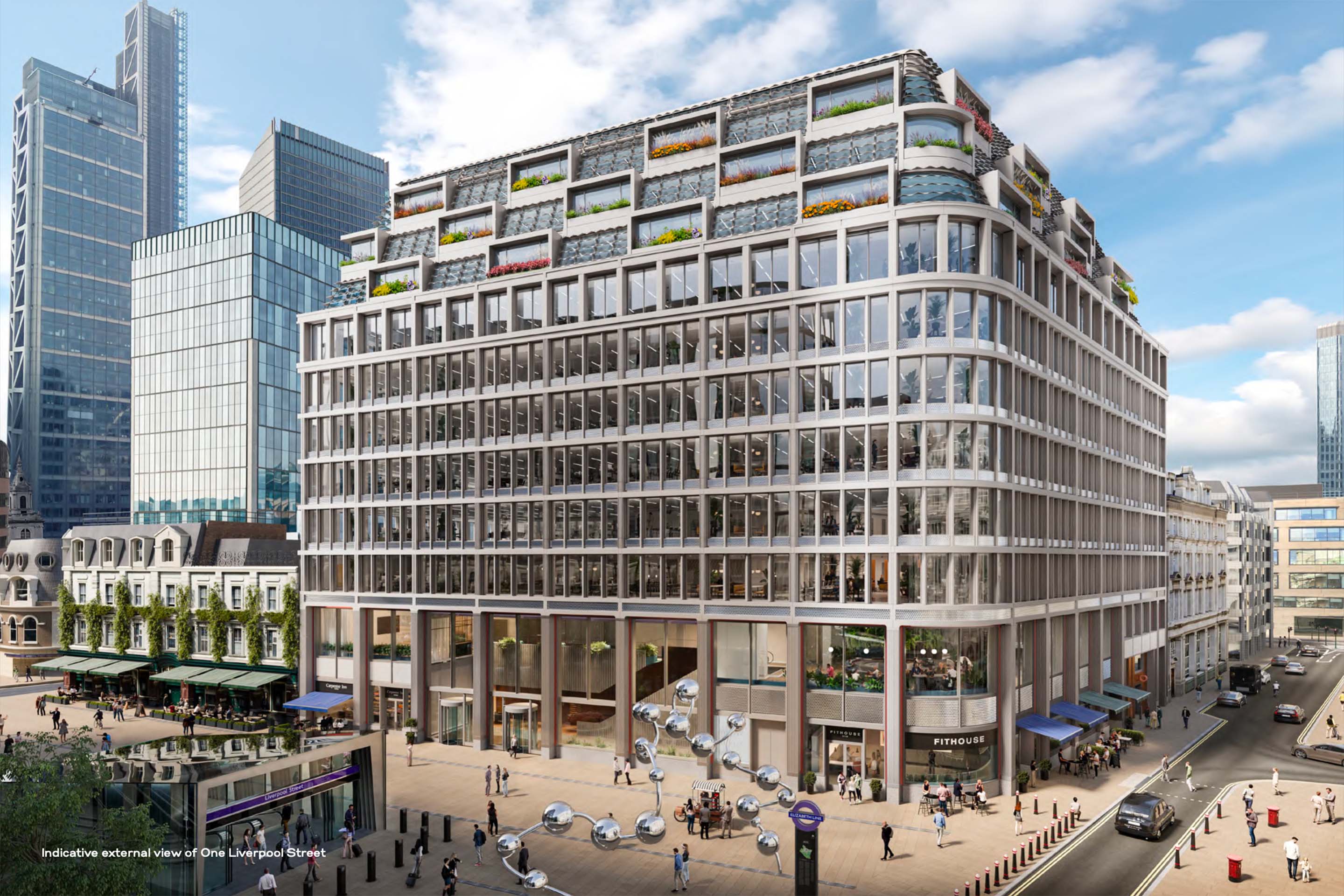
"We had multiple nights of working at two, three in the morning," Ben tells me about the construction process. The contractors were building over live Underground lines, so it had to be done when the trains weren’t running.
History and hidden surprises
Building over tube lines is one thing, but developments in the historic West End face different obstacles. At the Pegasus Mayfair site near Piccadilly, the team had to keep the building's original 1920s listed facade fully intact while demolishing and rebuilding everything behind it. "We've had to effectively brace it with steel to keep that upright while we take away the rest of the building," Ben explains.
The ground beneath London also holds its own secrets. You can barely dig down a few inches before you start exposing the past. It can be graveyards or plague pits, Roman ruins, ancient temples… but at Pegasus House, the team discovered challenges left over from a hasty post-war reconstruction. Instead of soil, they found massive chunks of buried concrete from the previous development. Less historically significant than a temple, perhaps.
“It did make things more complicated...” Ben says.
The site is still historically significant to Aviva though. It used to be one of our offices, decades ago.
"We had to build effectively a concrete cage over the Circle and Metropolitan line tracks."
I laugh as I say the idea of accidentally cutting power to the Tube would give me cold sweats.
“It did give us significant sleepless nights.” he replies. Not just because they were working at 2am.
One mistake and you’ve delayed your project, but you’ve also shut down a tube line and would now face some rather hefty bills (and, potentially worse in my mind, some very angry commuters).
The risk is worth it though. Both One Liverpool Street and 101 Moorgate sit at opposite ends of the Elizabeth Line platform. When it comes to location, location, location – they both have all three.
Not just a place for desks
Of course, location is just the start. A leading property company just moved from Mayfair to One Liverpool Street. What convinced them? What do companies like that actually look for in a new office?
"Sustainability, amenity, and, yes, location," Ben tells me. "That would be the three."
"A lot of companies that have a net zero target can actually satisfy a lot of that target by occupying a building that is very sustainable," Ben explains. He tells me that every development that we work on is 100% electric, aiming for BREEAM Outstanding ratings.
Then there's talent. "It helps attract the best young talent, because a lot of the best young talent are keyed into: Does this building make a positive contribution?”
But perhaps most importantly, these buildings make sense for how people actually work now, and for a wider group of people.
"The classic, ‘one size fits all’ open-plan office is the construct of the extrovert," Ed tells me (and as an introvert myself I fully agree).
"Different people need different sorts of environment to work in."
Modern offices need variety. We talk about what that variety might be. Open plan sections of course, but also quiet zones, collaborative spaces, places to have private phone calls. I think about that colleague who’s always very loud on their very frequent calls…
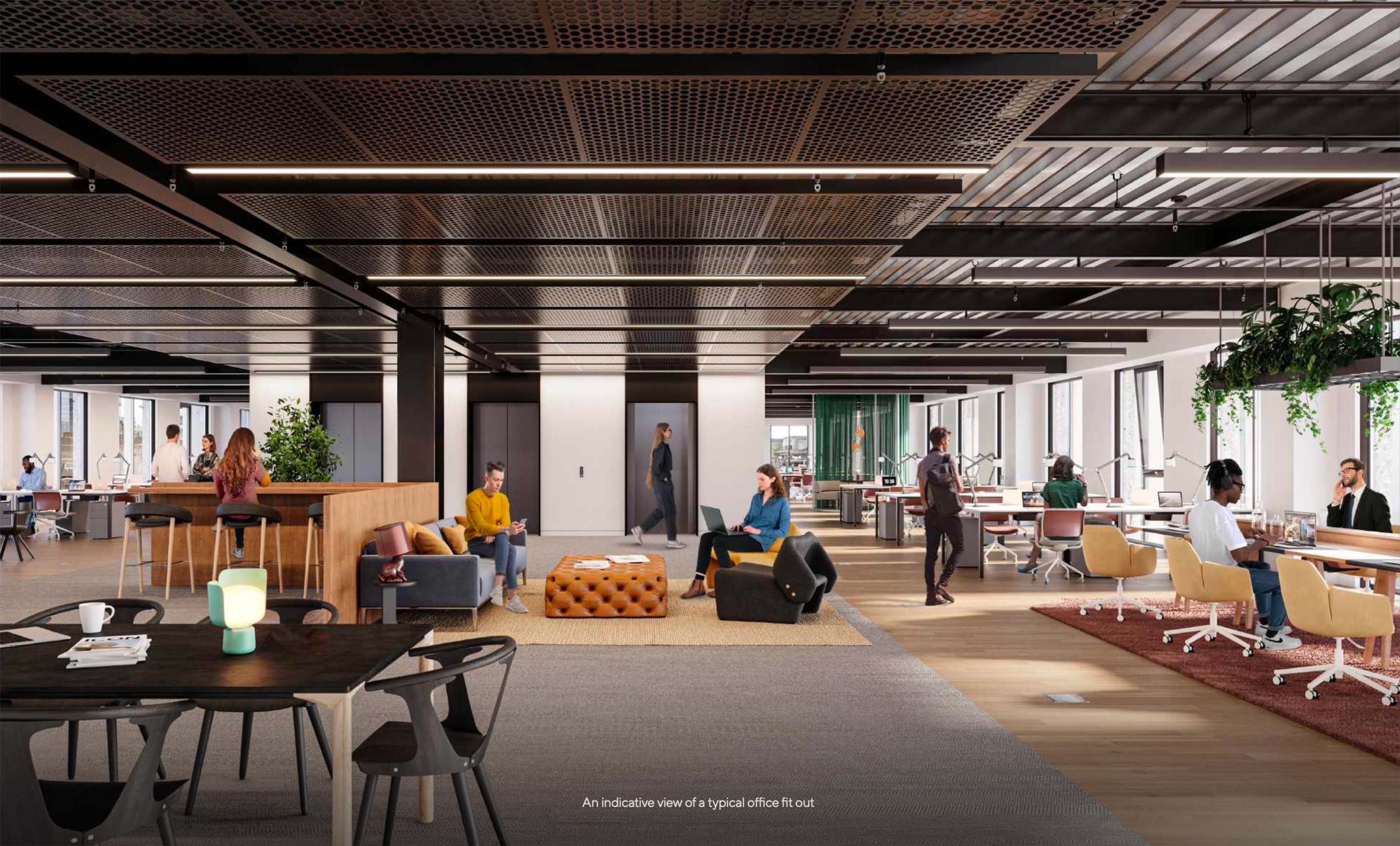
It’s not just the working spaces though. It’s the things that make the building more than a place to put desks. "Roof terraces, restaurants, auditoriums, breakout space," Ben adds, introducing me to that term ‘amenity’, and telling me all the great stuff that surrounds some of the offices we’re helping build.
I can tell, talking to both Ed and Ben that they’re both really passionate about making the buildings that we invest in the best they can be, both for the occupiers and for the surroundings. While One Liverpool Street is a more polished, ‘corporate headquarters,’ another project in Shoreditch is being refurbished to keep that typically warehouse character, with exposed brickwork to appeal to media and tech companies.
“It’s Shoreditch, what else could the building be like?” I joke with Ben, but it’s true. Glass and steel wouldn’t fit as well there.
Different businesses need different environments, and different environments call for different buildings. Otherwise? "You have office space that people don't really want to work in. They're more incentivised to work from home," Ed explains.
The office I’d want to work in
That’s when Ben shows me plans for 130 Fenchurch Street, a 35-storey tower that will complete in the 2030s.
Think how much things have changed in the last ten years: Covid. Ukraine. Financial turmoil. Would you be willing to bet millions of pounds on how things might change in the next ten? Ed and Ben are making decisions today for a world that doesn't exist yet, helping the City to get ready for whatever the future brings.
As Ben pulls up the architectural renders on his screen though, I immediately smile as I take it in. There are these green terraces cut into the building at different levels – gardens in the sky. As a photographer, I can already imagine how they'll look against the cityscape.
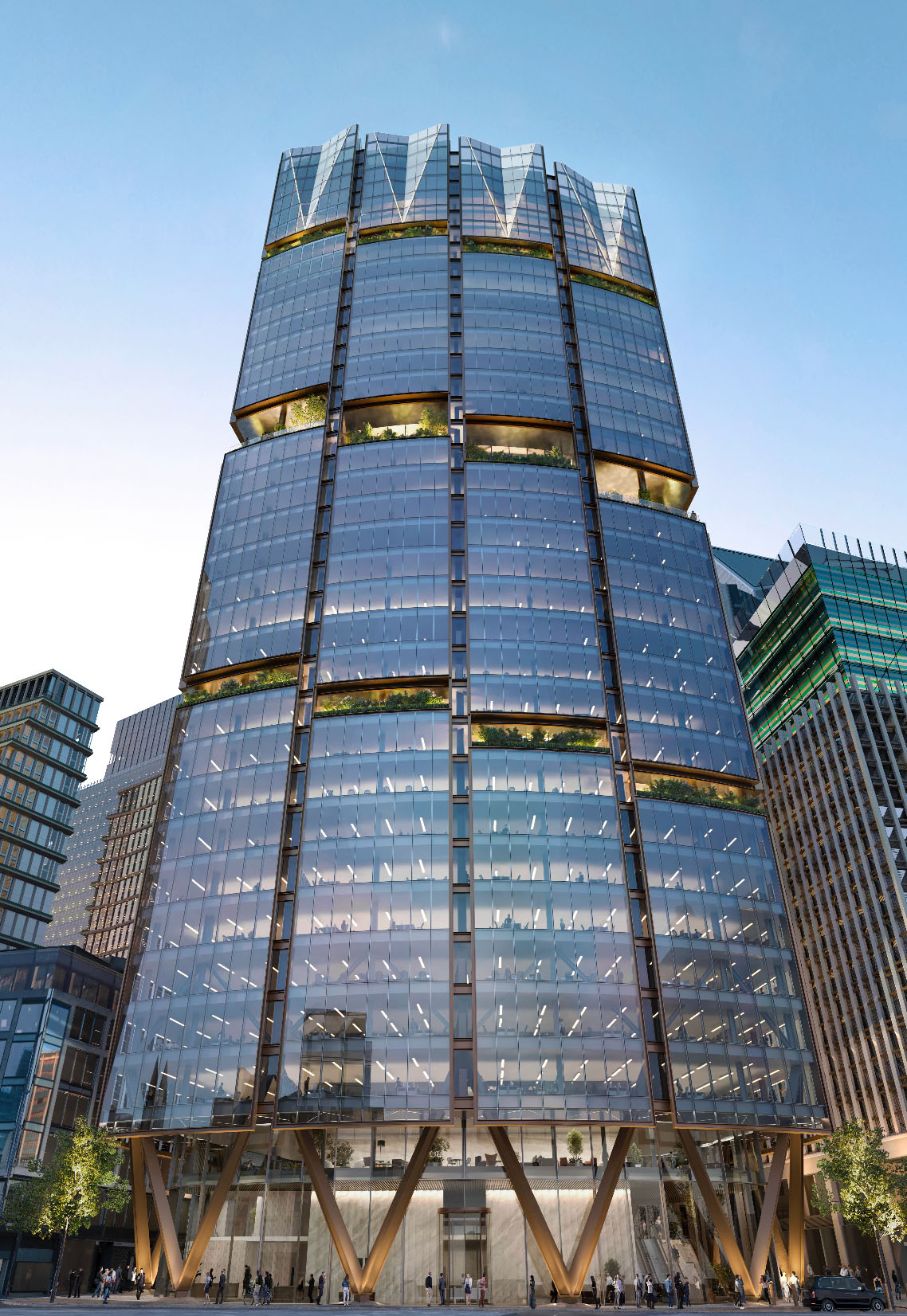
That’s definitely an office I’d want to work in. It might give me a new vantage point with my camera, too.
"There's a cultural space on floor 17," Ben points out. "For art exhibitions. Free to the public." He scrolls up. "And a public viewing gallery on floor 20."
This sort of thing is designed into the building from the start. There are spaces where school groups can visit, where local artists can exhibit, where anyone can come and see their city from above.
But designing and approving a tower like this doesn’t come cheap. Even before the first shovel hits soil… "In terms of professional fee spend, you're near on £10 million," Ben explains. Just to get to a place where you can get planning permission.
It's a big bet on London's future, but I can tell that both Ben and Ed just really, really like London.
Ed tells me about Fitzroy Place, which Aviva manages. "It's on the former site of the Middlesex Hospital, which is where I was born!" It was a nice surprise on his first day at Aviva Investors, he tells me, when he discovered he'd be managing the site.
That connection to place runs through everything they do. I can hear it as Ben talks about how they managed to preserve the listed windows in The Harrison on Curtain Road and how important that was to him, or as Ed talks about Fitzroy Place and his own connection to it. Ben talked a few times about the views that you get over the City from the terrace of 101 Moorgate.
I can tell these are way more than just financial investments to them both.
How it all connects
As financial investments though, it’s a pretty simple story. At least to a non-investor like me.
Aviva invests in offices in the City because returns are strong. That’s the foundation for any investment, when you get right down to it. In this case, returns are strong because demand is really high, and demand stays high because London is a crucially important global business hub. London is a respected centre for business partly because it has the infrastructure that global businesses need – and that includes things like high quality offices for their people to work in.
Break any link in that chain and it starts to fall apart.
If businesses can't find space, they go somewhere else. If they go somewhere else, demand drops. Returns shrink. Fewer people build. More businesses choose to go elsewhere.
Ed puts it well: "You're not only making an exciting new home for business that helps them attract the best talent from across the world, but, actually, you're also helping the UK to compete globally.”
"We are truly best-in-class at developing and managing central London assets," he says. "We're trusted by world-class partners and we’re delivering at scale and quality few can match."
Ben adds: "Whether you are standing on a tube line at 3:00 in the morning... or dealing with resident questions on a Saturday morning... there's a huge amount that goes into getting these developments from start to finish.”
“But the quality of what we are building is market-leading, and we should be proud of that.”
I can tell they are.















